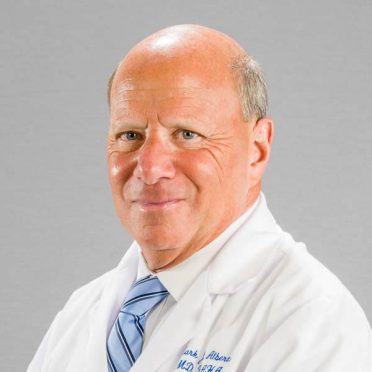It’s all about the timing when it comes to a stroke. Medication administered quickly enough can reverse its often debilitating effects and endovascular surgery within 24 hours can remove a clot causing it.
This relatively new endovascular therapy, available at Hartford Hospital and St. Vincent’s Medical Center, has proved life-saving and life-changing for many stroke patients, according to Dr. Mark Alberts, co-physician-in-chief of the Hartford HealthCare Ayer Neuroscience Institute.
“A lot of hospitals are not doing endovascular therapy because they either don’t have the technology or aren’t convinced of the data,” Dr. Alberts said. “But we continue widespread use of it and have a standard protocol for treatment across the system at each of our stroke centers.”
May Stroke Awareness Month and he noted that having more tools – and extended windows of time in which to use those tools – is improving outcomes for patients with a stroke, which remains the No. 1 one cause of adult disability in the United States.
The availability of new brain imaging techniques now gives stroke specialists up to 24 hours to remove the clot causing the stroke, which is a blockage of blood flow to the brain causing tissue damage or death.
Another helpful tactic has been administering an intravenous medication called tissue plasminogen activator (TPA) to break up clots. Until recently, providers had four and a half hours after a stroke began give the medication for optimal results. That window, Dr. Alberts said, has been extended to up to 6 to 8 hours.
“We are able to expand the population of people eligible for TPA,” he said. “Instead of selecting patients within a very narrow time period, we can now use more precise brain imaging tools to determine who has salvageable brain and who could benefit from reperfusion therapy.
“It’s very exciting, an opportunity to minimize or reverse the effects of a stroke.”
Such news, he said, demonstrates how the healthcare community is “making progress” treating people after stroke. Once the third-leading cause of death in this country, stroke is now the fifth-most common, he said.
“We still have a lot of work to do, and a significant number of strokes can be prevented if people better recognize and address risk factors,” Dr. Alberts said.
Familiar risk factors for stroke include smoking, high blood pressure, diabetes, an inactive lifestyle and obesity, he added that there is emerging data showing that untreated sleep apnea can also increase the chance of stroke.



